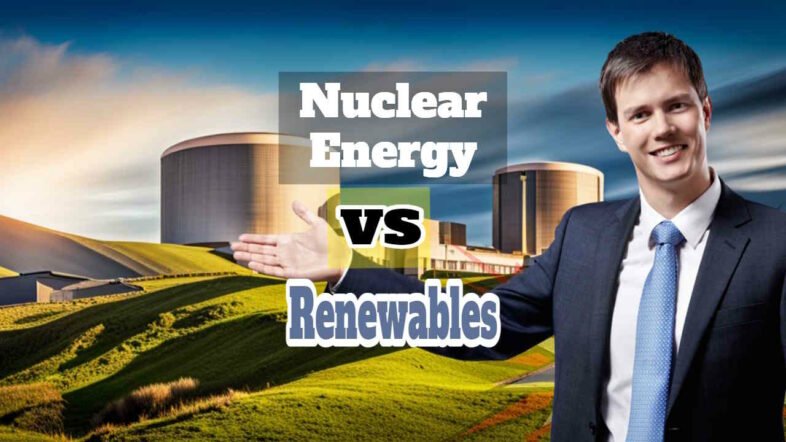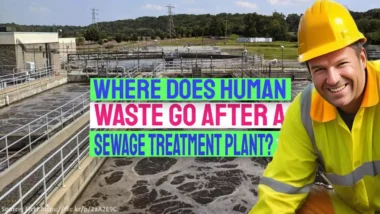Deciding between nuclear and renewable energy can be tricky. A fun fact – renewables and nuclear power both have a role in slashing our carbon footprint. This article dives deep into the benefits, myths, and the environment impact of each, guiding you through making an informed choice.
Let's explore together.
Key Takeaways for Nuclear Energy vs Renewables
- Nuclear energy and renewables both play a key role in reducing carbon emissions, but they work differently. Nuclear power can generate electricity all the time 24/7, while renewables like solar and wind depend on weather conditions.
- Small Modular Reactors (SMRs) and nuclear fusion are exciting future technologies for nuclear power. SMRs offer flexible and safer options, while nuclear fusion could provide unlimited clean energy if scientists solve current challenges.
- While nuclear power generates very little waste compared to fossil fuels, managing its radioactive waste is essential for safety, and costly. Renewable energies have a lighter impact on the planet but need large spaces to operate efficiently.
- The cost of renewable energy is dropping quickly, making it the cheapest form of new electricity in many areas. However, both nuclear and renewable sources require significant initial investment in technology and infrastructure.
- Combining nuclear energy with renewable sources can create a stable supply of low-carbon electricity. Start thinking about cooperation! not “nuclear energy vs renewables”. Think “nuclear energy and renewables.” This mix could be crucial for meeting global energy needs sustainably without depending heavily on fossil fuels.
Comparing Nuclear Power and Renewable Energy
Nuclear power and renewable energy differ in cost, environmental impact, and reliability. Renewable energy tends to have lower costs and minimal environmental impact compared to nuclear power.

Cost comparison
Let's dive into the cost comparison between nuclear power and renewable energy sources. It's a hot topic, often sparking lively debates among students, professionals, and interested members of the public alike. The economics of energy production play a crucial role in shaping our sustainable future, so understanding these costs is vital.
| Aspect | Nuclear Energy | Renewable Energy (Solar, Wind) |
|---|---|---|
| Initial Capital Cost | High, due to complex construction and safety measures. | Lower in comparison, with costs decreasing as technology advances. |
| Operating Costs | Relatively low, stable fuel prices. | Very low, essentially free fuel (sunlight, wind). |
| Maintenance Costs | High, sophisticated technology requires specialist maintenance. | Lower, simpler technology is easier and cheaper to maintain. |
| Decommissioning and Waste Management | Very high, long-term storage of radioactive waste is expensive. | Low, components are mostly recyclable with minimal environmental impact. |
| Lifetime | Long, often exceeding 60 years. | Varies, solar panels around 25-30 years, wind turbines approximately 20-25 years. |
| Cost per Kilowatt-hour | Competitive, but influenced by high upfront and decommissioning costs. | Decreasing rapidly, becoming the cheapest form of new electricity in many areas. |
Understanding these cost dynamics is just the tip of the iceberg. Delving deeper, we'll explore the environmental impact next, an area that's critical for our planet's health and our future generations.
Environmental impact
Nuclear power stations and renewable sources like solar farms and wind energy play a big role in reducing greenhouse gas emissions. Nuclear plants produce electricity without emitting carbon dioxide, helping to tackle global warming.
On the other hand, renewables harness natural elements—sunlight and wind—to generate clean energy. Both methods present effective ways to decarbonise electricity production, critical for addressing the climate crisis.
However, nuclear energy comes with the challenge of managing nuclear waste. Highly radioactive spent fuel needs careful handling and long-term storage solutions to protect people and the environment.
Renewables have a lighter touch on the planet, but they require large areas of land or sea for solar farms or offshore wind operations. Each source's environmental impact varies, yet both seek to provide low-carbon energy options essential for a sustainable future.
Moving forward, examining myths and perceptions becomes key to understanding these power sources better.
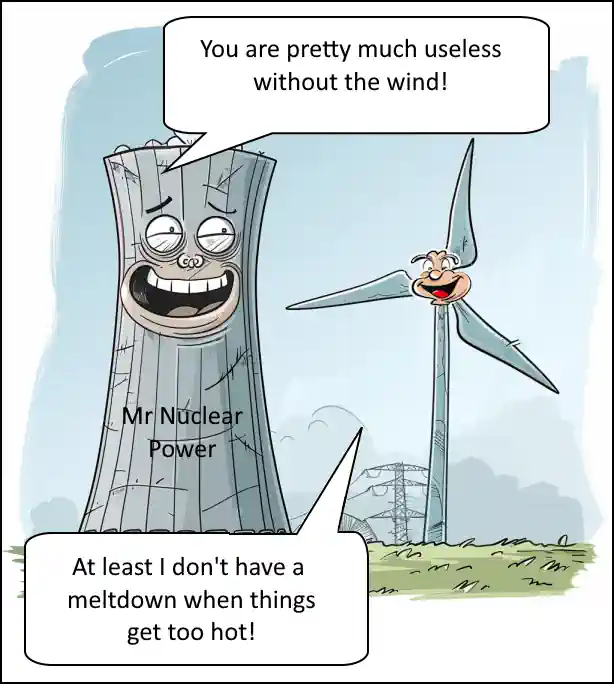
Reliability and availability
Moving from environmental considerations, we dive into the reliability and availability of nuclear energy vs renewables. Nuclear power plants are known for their ability to generate electricity around the clock.
They don't rely on weather conditions like solar power or wind farms do. This makes them a stable source of energy, ready to meet demand at any time.
Renewable sources, on the other hand, have their moments of variability. Solar panels need sunlight; wind turbines need wind—both can be unpredictable. But advancements in technology are improving how we store this energy, making renewables more reliable than before.
Still, for continuous power generation that supports the grid especially during peak times, nuclear remains a robust option.
Myths and Perceptions Surrounding Nuclear and Renewable Energy
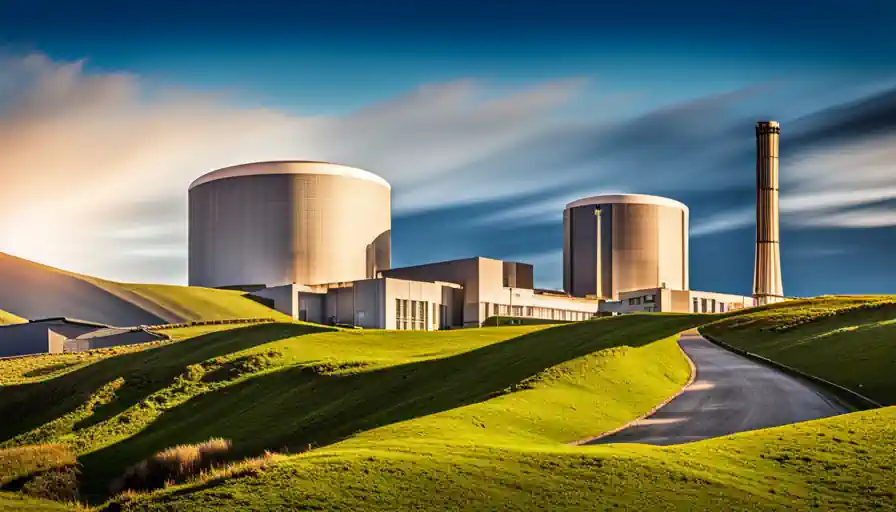
Myths and Perceptions Surrounding Nuclear and Renewable Energy often lead to misconceptions about safety, cleanliness, and their role in reducing greenhouse gas emissions. Safety concerns surrounding nuclear energy are commonly misunderstood, while the sustainability of renewable energy sources is often oversimplified.

Safety concerns
Many people worry about the safety of nuclear reactors. They fear accidents and radiation exposure. However, modern nuclear technology is incredibly safe. Advances in reactor design greatly reduce risks.
Nuclear accidents are very rare, thanks to strict regulations and advanced safety measures.
Renewable energy sources like wind power and solar energy also come with their own safety concerns. For example, manufacturing solar panels involves toxic chemicals. Wind turbines can impact bird populations.
Yet, these impacts are minimal compared to the effects of climate change driven by fossil fuels. Overall, both nuclear and renewable energies offer safer alternatives to traditional fossil fuels.
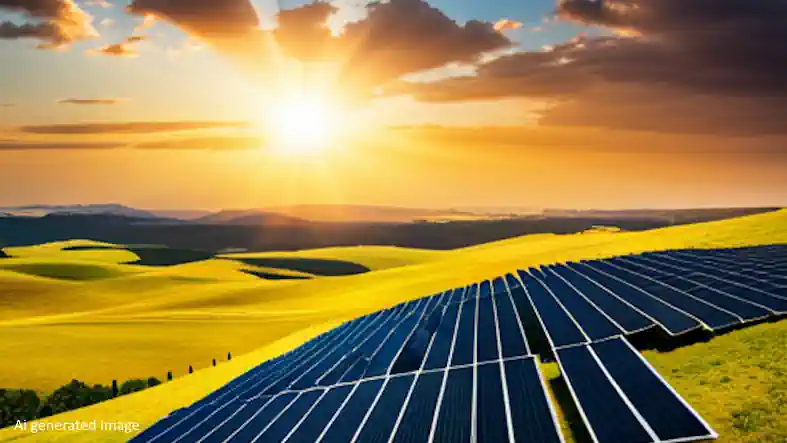
Cleanliness and sustainability
After addressing safety concerns, it's crucial to dive into the cleanliness and sustainability of nuclear energy versus renewable sources. Nuclear power offers a low carbon option for electricity generation, producing minimal greenhouse gases compared to fossil fuels.
This aspect positions nuclear as a key player in global decarbonisation efforts. On the other hand, renewables like solar and wind generate power without emitting carbon dioxide during operation, reinforcing their role in achieving carbon neutrality.
Renewable energy technologies are celebrated for their ability to harness natural resources endlessly available on Earth—sunlight and wind. They leave behind no waste or pollution, marking a significant step towards cleaner energy systems.
However, nuclear power isn't far behind in this race; with advancements such as small modular reactors (SMRs) and potential future developments like thorium reactors or nuclear fusion, the nuclear industry works tirelessly towards reducing its environmental footprint further.
Both pathways showcase promising strides towards electrification and meeting rising energy demand sustainably.

Role in reducing GHG emissions
Moving from the dialogue on cleanliness and sustainability, it's clear that both nuclear energy and renewables have a critical part to play in slashing GHG emissions. Nuclear power, through nuclear fission, generates immense amounts of electricity without emitting carbon dioxide during operation.
This positions it as a zero-carbon source of energy, vital for decarbonisation efforts globally. On the other hand, renewable sources like wind and solar power produce energy from natural processes that are continuously replenished, making them indispensable in creating a sustainable energy mix aimed at reducing global carbon emissions.
Renewable technologies have become more cost-effective over time and can significantly lower GHG emissions when integrated into the power grid effectively. These sources are pivotal in achieving decarbonisation or energy transition towards systems that lean heavily on low to zero-emission generation technologies.
Together, nuclear and renewable energies offer a robust solution to the climate emergency by providing reliable, low-carbon electricity essential for powering homes and industries while combating climate change.
The Future of Nuclear Energy
4. The Future of Nuclear Energy involves the development of small modular reactors, nuclear fusion, and its potential role in replacing crude oil – read on to explore these exciting prospects further.

Small modular reactors
Small modular reactors, or SMRs, are a key player in the future of nuclear energy. Unlike traditional nuclear power plants, they're smaller and can be built off-site, then transported to their location.
This makes them faster to construct and potentially more affordable. They offer flexibility too; you can add units as demand grows. Their compact size reduces the risk of accidents, and they're designed to be safer with advanced technology.
SMRs have another advantage: they fit well with renewable energy sources like wind and solar power. Because they can quickly adjust their output, SMRs help balance the grid when sunlight or wind is low.
They produce zero carbon emissions during operation, making them a strong ally in fighting climate change. With global energy needs rising, SMRs could play a crucial role in providing clean, reliable electricity alongside renewable sources of energy.
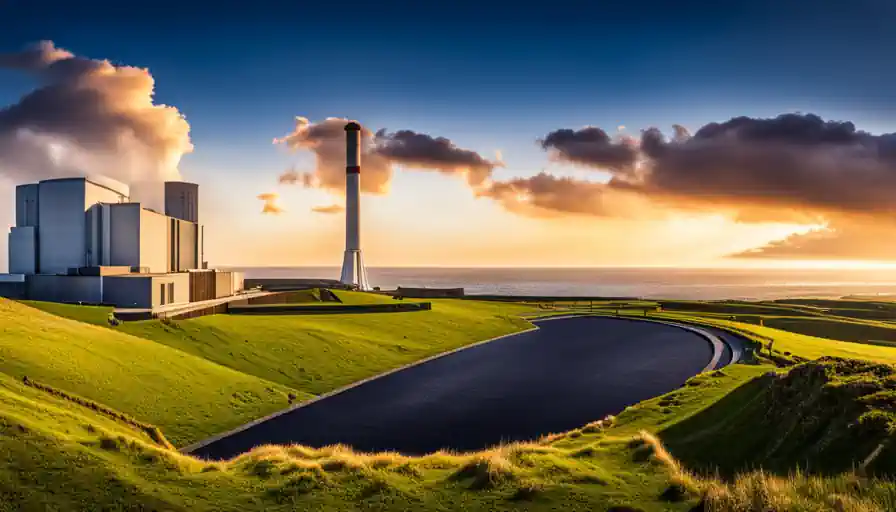
Nuclear fusion
Nuclear fusion, the same process that powers the sun, holds promise for generating vast amounts of clean energy. Unlike nuclear fission, which creates radioactive waste and carries inherent safety risks, fusion produces minimal long-lived waste and doesn't pose a meltdown threat.
The fuel used in fusion reactions – isotopes of hydrogen – is abundant and can be extracted from water and lithium. Furthermore, as opposed to fossil fuels or even nuclear fission reactors, fusion does not emit greenhouse gases during its operation.
Scientists are working on replicating the conditions at the core of stars here on Earth to harness this virtually limitless source of energy.
Potential role in replacing crude oil
Nuclear energy could potentially play a significant role in replacing crude oil. As the world seeks cleaner and more sustainable energy sources, nuclear power offers a reliable alternative to the traditional reliance on fossil fuels.
The generation of nuclear energy produces no direct emissions of greenhouse gases, making it an attractive option for reducing our dependency on crude oil and mitigating climate change.
Moreover, advancements in small modular reactors and nuclear fusion technologies hold promise for expanding the use of nuclear power as a clean energy source.
Additionally, with the instability and environmental impact associated with oil extraction and transportation, nuclear energy presents a viable solution that can help reduce these drawbacks.
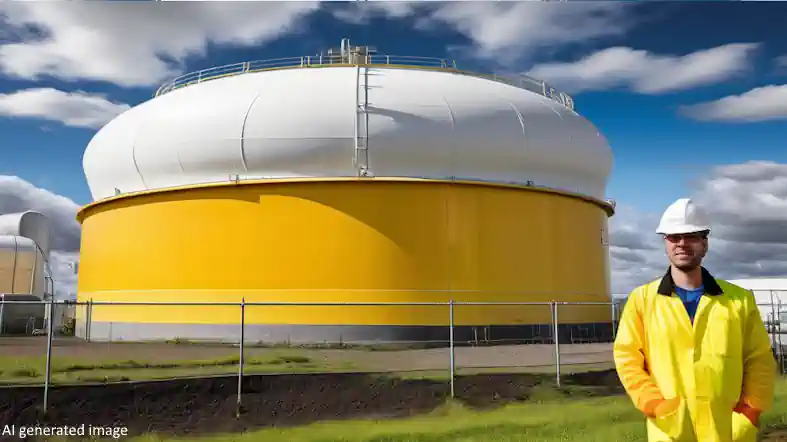
Nuclear Energy Vs Renewables Conclusion: The Ideal Mix of Nuclear and Renewables for a Sustainable Future
In conclusion to this discussion on Nuclear Energy Vs Renewables, blending nuclear energy with renewables offers a sustainable path forward. Both provide reliable power and complement each other's strengths. Embracing this mix can help meet energy demands while reducing environmental impact.
It's essential to harness the benefits of both to secure a greener future.
FAQs for Nuclear Energy vs Renewables
1. What's the big deal with nuclear energy versus renewables?
Well, it's a bit like comparing apples and oranges.
Nuclear energy, thanks to uranium-238 and that whole chain reaction thing in pressurised water reactors, provides a stable supply of electricity—no matter if it's windy or sunny out.
Renewables, on the other hand, rely directly on nature’s whims – think solar panels and wind turbines. They're great when conditions are just right.
2. Does nuclear power really cost us more?
You might have heard folks say that nuclear is too pricey compared to renewables.
But let's look at the numbers: things like LCOE (that’s ‘levelised cost of electricity,' by the way) show us that sometimes nuclear can be quite competitive—especially when you consider how much power it generates round the clock. Plus, with innovations and new tech from companies like Orano in play, we could see those costs dropping even more.
3. Are people overreacting about nuclear safety?
Oh yeah—the myths! Some reckon nuclear plants are just accidents waiting to happen… but here’s the scoop: modern NPPs (nuclear power plants) and their operators work super hard to keep everything safe; plus they've got tons of regulations keeping them in check.
The World Nuclear Industry Status Report shows steady improvements all around!
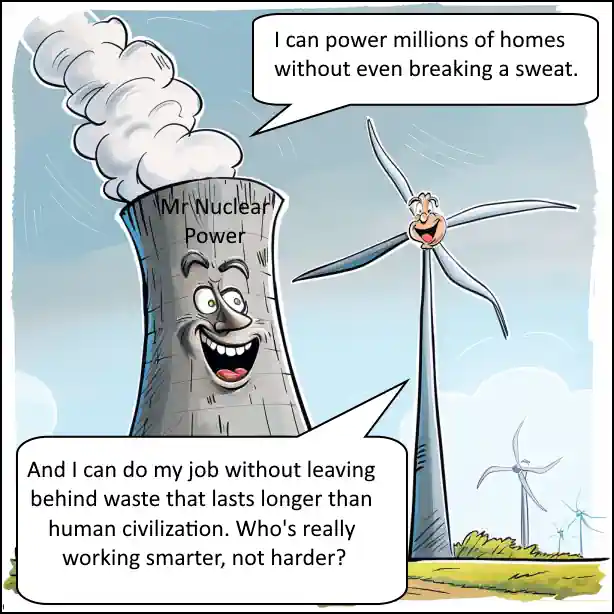
4. Can renewables handle our energy needs alone?
Renewables are fantastic – clean energy straight from nature – but there's a snag: they're not always around when you need them most (hello, cloud cover!).
That’s where ‘load following’ comes into play – adapting power output based on our needs which some newer NPPs do very well.
5. How do both options affect our planet?
Let’s talk green for a second: both sides of this coin offer cleaner options than old-school coal or natural gas—but there's more under the surface! While renewables give us zero-emission vibes during operation, producing them can leave a footprint too (materials mining anyone?).
And while civil-nuclear energy produces waste…technology marches onward towards solutions for reducing or repurposing what we’ve got left over.


